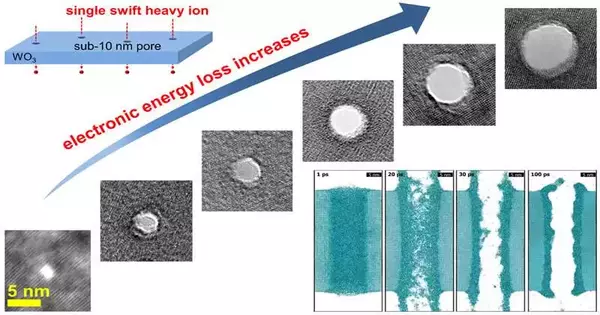Using swift heavy ions, Chinese researchers have proposed a novel strategy for the direct fabrication of sub-10 nm nanopores in WO3 nanosheets. Nano Letters has published the findings.
Researchers from the Joint Institute for Nuclear Research in Russia and the Materials Research Center of the Institute of Modern Physics (IMP) of the Chinese Academy of Sciences (CAS) collaborated on the study.
For single-molecule detection, nanofluidic devices, and nanofiltration membranes, the production of high-quality solid-state nanopores is crucial. Focused ion or electron beams are the most common method for creating nanopores in SiN, Al2O3, and other inorganic films.
However, this poring technique necessitates either direct imaging or a feedback system, and only one nanopore can be constructed at a time, limiting mass production. As a result, it is necessary to investigate a brand-new poring technique that is capable of producing nanopores with density and size control without the use of a feedback system.
Using rapid heavy irradiation, the researchers have demonstrated a direct poring technique for WO3 nanosheets based on the Heavy Ion Research Facility in Lanzhou (HIRFL).
They also used simulations of molecular dynamics to explain the underlying mechanism. The key factors for the formation of nanopores were found to be the transient molten phase’s surface tension and viscosity brought on by swift heavy ions.
In WO3 nanosheets, the researchers created nanopores with sizes ranging from 1.8 to 7.4 nm by selecting ions with various electronic energy losses. By employing a variety of ion fluxes, they are able to regulate the density of nanopores.
This novel approach, which does not involve a chemical etching process, has the potential to be extensively used. It sheds new light on the process by which latent ion tracks form in solid materials and opens the door to the creation of solid-state nanopores using swift heavy ions in low viscosity and surface tension materials.
More information: Lijun Xu et al, Direct Fabrication of Sub-10 nm Nanopores in WO3 Nanosheets Using Single Swift Heavy Ions, Nano Letters (2023). DOI: 10.1021/acs.nanolett.3c00884





